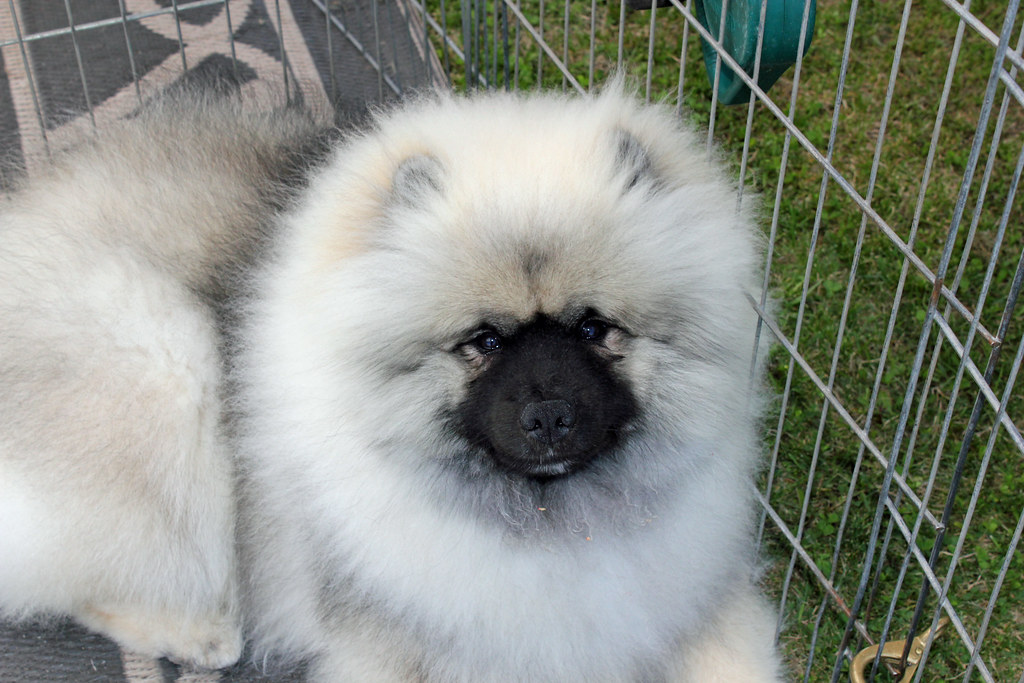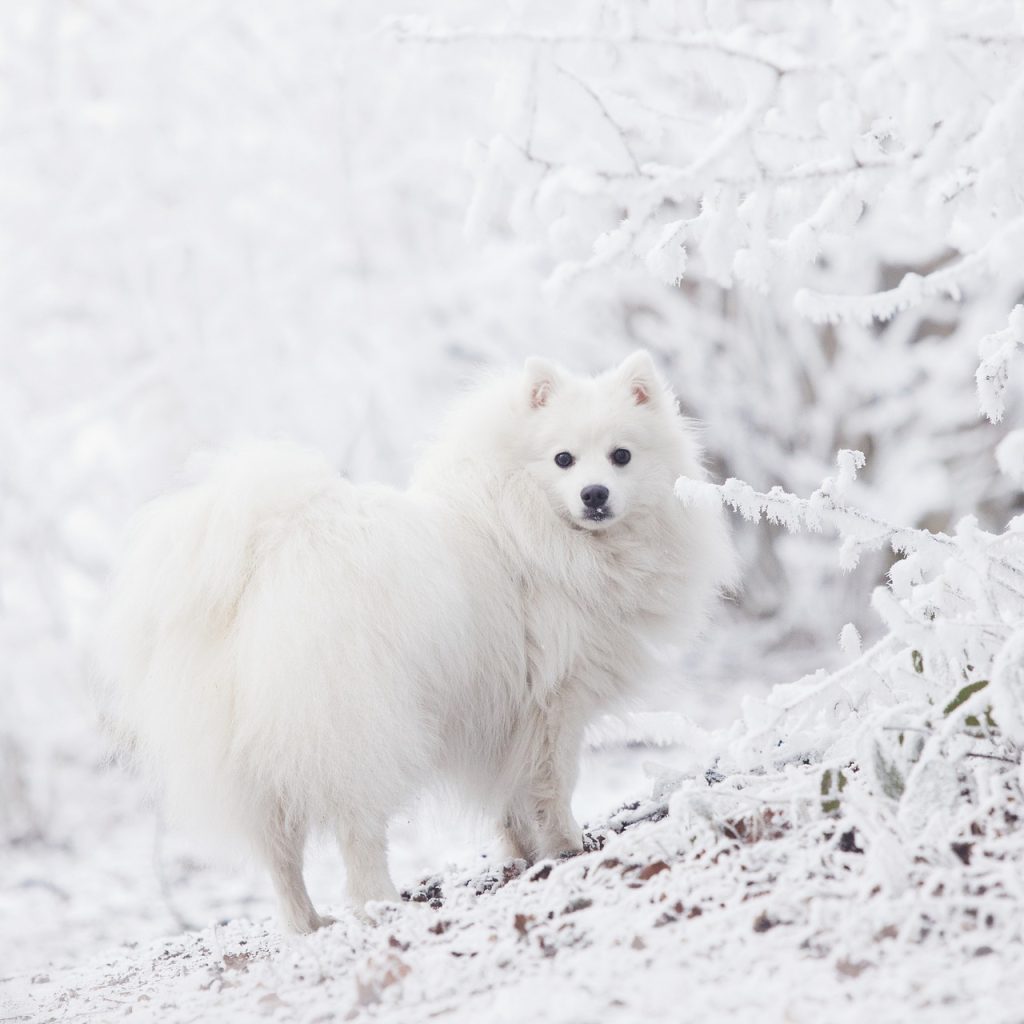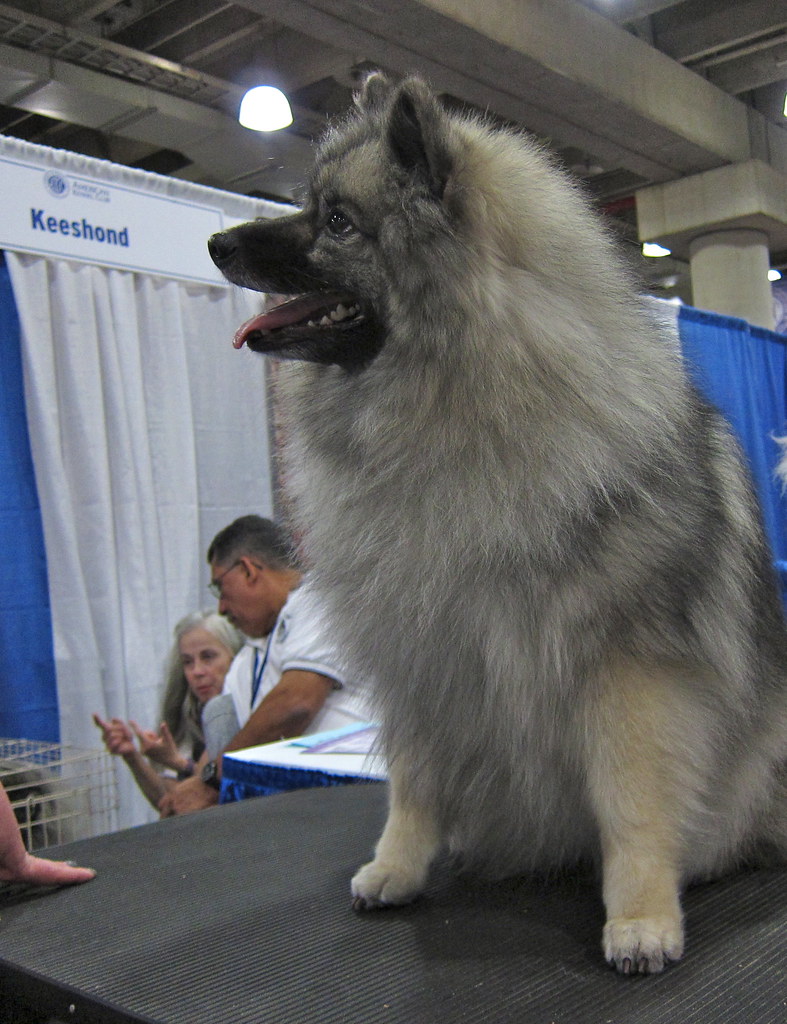Are you looking for a furry friend who is adorable but also loyal and affectionate? Look no further than the Keeshond! This beautiful and intelligent breed has captured the hearts of dog lovers worldwide with its distinctive looks and delightful personality. This comprehensive guide will explore the history, characteristics, grooming needs, training requirements, health considerations, living space considerations, socialization, and caring for a Keeshond. Whether you’re a seasoned dog owner or considering bringing a Keeshond into your home for the first time, this article will provide all the information you need about this remarkable breed.
Key Takeaways
- Keeshonds are known for their striking appearance, plush double coats, fox-like faces, and expressive eyes.
- They have a friendly and outgoing temperament, making them excellent family pets and companions for individuals of all ages.
- Keeshonds require regular grooming to maintain the health and appearance of their coat.
- Training should be consistent, positive, and reward-based to bring out the best in Keeshond’s intelligence and eagerness to please.
- Socialization from an early age is crucial to ensure that Keeshonds grow up to be well-rounded and confident dogs.
- Consider your living space and lifestyle when deciding if a Keeshond is the right breed for you.
- Keeshonds can be prone to certain health conditions, including hip dysplasia, epilepsy, and progressive retinal atrophy.
Keeshond: A Brief Overview
History and Origin
The Keeshond, often known as the “Dutch Barge Dog,” is a dog breed from the Netherlands. It has a rich history dating back several centuries and was initially developed as a companion and watchdog on barges and riverboats. These intelligent and alert dogs would guard the vessels and provide companionship to the crew members. The Keeshond’s popularity spread beyond the waterways, and it soon became a beloved breed in Dutch households.
Distinctive Characteristics and Temperament
Distinctive Characteristics
One glance at a Keeshond, and you’ll be captivated by its distinctive appearance. The luscious double coat of these medium-sized dogs consists of a rich undercoat and a longer, rougher outer coat. Their fur is typically a mix of gray, black, and cream, forming a beautiful “spectacles” pattern around their eyes and a majestic “mane” around their necks. The Keeshond’s fox-like face, plumed tail carried over its back, and expressive almond-shaped eyes contribute to its unique charm.
Temperament
The Keeshond is renowned for its friendly and outgoing temperament, making it an ideal companion for families and individuals. These dogs thrive on human interaction and enjoy being a part of all family activities. Keeshonds are known to be great with children, often developing strong bonds and being gentle and patient. They are also naturally social dogs and tend to get along with other pets when properly introduced and socialized.
Grooming Needs: Keeping the Keeshond’s Coat Beautiful
Proper grooming is essential to keep your pup looking and feeling its best. The breed’s lush double coat requires regular maintenance to prevent matting, promote healthy skin, and maintain its distinctive appearance.
Brushing and Coat Care
Keeshonds have a dense, plush coat that sheds moderately throughout the year. To keep their fur in top condition, regular brushing is necessary. Aim to brush your pup at least twice to thrice a week, using a slicker brush or a medium-toothed comb to remove loose hair, tangles, and debris. Pay extra attention to the areas behind the ears, on the chest, and around the tail, as these are prone to matting.
Bathing and Drying
Keeshonds should be bathed every two to three months or as needed. Use a gentle dog shampoo suitable for sensitive skin, and rinse thoroughly to remove all soap residue. After bathing, dry your pup completely, as their dense coat can retain moisture and lead to skin issues. A high-velocity or forced-air dryer can help speed up the drying process.
Trimming and Maintenance
Keeshonds require regular coat maintenance, including trimming the hair between their paw pads and around the ears. Furthermore, their nails should be cut regularly to avoid overgrowth and probable pain. If you need help properly, trim your pup’s nails or maintain its coat, consult a professional groomer with experience with the breed.
Training Needs: Cultivating Intelligence and Obedience
Training a Keeshond requires a patient and consistent approach. These intelligent dogs are quick learners and thrive on positive reinforcement methods. Here are some training tips to help you bring out the best in your pup:
Start Early
Begin training your pup as early as possible. Puppies have a critical socialization period, and exposing them to various sights, sounds, people, and animals during this time helps them develop into confident and well-adjusted adults. Introduce your pup to new experiences gradually, focusing on positive associations and rewards.
Positive Reinforcement
Keeshonds respond best to positive reinforcement techniques such as praise, treats, and rewards. Use these motivators to reinforce desired behaviors and gently redirect any unwanted behaviors. Avoid harsh training methods or punishment, as they can lead to fear or anxiety in your pup.
Basic Commands
Teach your pup basic obedience commands such as “sit,” “stay,” “down,” and “come.” These commands form the foundation for good manners and can help keep your dog safe in various situations. Practice these commands regularly, using positive reinforcement and short training sessions to keep your pup engaged and motivated.
Mental Stimulation
Keeshonds are intelligent dogs that thrive on mental stimulation. Incorporate interactive toys, puzzle games, and training exercises into your daily routine to keep your mind sharp and prevent boredom. Mental stimulation helps prevent destructive behaviors from excess energy and a lack of cognitive engagement.
Health Considerations: Promoting a Healthy Lifespan
While Keeshonds are generally healthy dogs, they are susceptible to some health issues, as are other breeds. Awareness of these potential issues and taking proactive steps can help ensure your pup’s well-being.
Common Health Issues
- Hip Dysplasia is a hereditary disorder in which the hip joint fails to grow normally, resulting in joint instability and potential pain.
- Epilepsy: Keeshonds are susceptible to epilepsy, a neurological disorder characterized by recurrent seizures.
- Progressive Retinal Atrophy (PRA): PRA is an inherited eye condition that causes gradual vision loss and, in severe cases, blindness.
- Hypothyroidism: When the thyroid gland fails to generate adequate hormones, it causes a variety of symptoms, such as weight gain, tiredness, and skin problems.
Regular Veterinary Care
Regular veterinary check-ups are crucial to ensure your pup’s overall health and longevity. Schedule routine wellness exams, vaccinations, and preventive treatments for parasites. Your veterinarian may also recommend regular screenings for hip dysplasia, eye examinations, and thyroid function tests.
Balanced Diet and Exercise
A healthy Keeshond requires a well-balanced diet as well as regular exercise. Choose a high-quality dog food that meets their nutritional needs and avoid overfeeding, as Keeshonds can be prone to weight gain. Regular exercise, such as daily walks or playtime in a securely fenced yard, helps keep your pup physically fit and mentally stimulated.
Living Space Consideration: Is a Keeshond Right for Your Home?
When considering adding a Keeshond to your family, evaluating your living space and lifestyle is vital to ensure a suitable environment for this breed.
Size and Activity Level
They are medium-sized dogs, typically weighing between 35 to 45 pounds (16 to 20 kilograms). While they are not overly energetic dogs, they require regular exercise to stimulate them physically and mentally. A securely fenced yard or access to safe outdoor spaces for walks and playtime is beneficial for a Keeshond.
Indoor vs. Outdoor Living
They are companion dogs and thrive on being close to their families. They must be better suited for outdoor living or being left alone for long periods. Keeshonds enjoy being part of family activities and are happiest when they have regular interaction and companionship. They can adapt well to apartment living with sufficient exercise and mental stimulation.
Barking Tendencies
They are considered to be loud dogs, and if not properly trained and socialized, they can be prone to excessive barking. Early training and consistent reinforcement can help curb excessive barking tendencies and promote good behavior.
Socialization: Building Confidence and Well-Roundedness
Socialization is a vital aspect of raising a happy and well-behaved Keeshond. Proper socialization exposes your dog to various people, animals, and environments, helping them develop into confident and well-rounded individuals.
Early Exposure
Start socializing your pup early, ideally between 3 to 16 weeks. Introduce them to different sounds, sights, smells, and experiences in a positive and controlled manner. Gradually expose your pup to new people, other animals, different environments, and everyday situations to help them become comfortable and confident.
Positive Associations
Make each new experience a positive one for your pup. Treats, praise, and rewards create positive associations with people, animals, and environments. This will help your pup feel secure and relaxed in various situations.
Ongoing Socialization
Socialization should be an ongoing process throughout your pup’s life. Continue exposing them to new experiences, people, and animals to reinforce positive behaviors and prevent fear or aggression. Regular visits to dog parks, obedience classes, and playdates with well-behaved dogs can further enhance their social skills.
Caring for a Keeshond: A Lifetime of Love and Care
They are loyal and affectionate companions who thrive in a loving and caring environment. Here are some key aspects to consider when caring for a Keeshond:
Mental Stimulation
Keep your pup mentally stimulated with interactive toys, puzzle games, and training exercises. Mental engagement helps prevent boredom and destructive behaviors.
Exercise and Playtime
Regular exercise is essential to keep your pup physically fit and prevent excess energy. Take them for daily walks, provide playtime, and engage in activities that match their energy levels.
Attention and Affection
They are social dogs that crave attention and affection from their human companions. Spend quality time with them, provide cuddles, and include them in family activities.
Regular Grooming
Maintain your pup’s coat through regular brushing, bathing, and trimming. This keeps them looking their best and promotes a healthy coat and skin.
Balanced Diet
Feed your pup a balanced and nutritious diet that suits their age, size, and activity level. Consult your veterinarian about the optimum nutrition for your pup.
Regular Veterinary Care
Schedule routine check-ups, vaccinations, and preventive treatments with your veterinarian. Regular veterinary care ensures early detection and prevention of potential health issues.
FAQs About Keeshonds
Is Keeshond a wolf hybrid?
No, they are not wolf hybrids. They are a purebred dog breed with no wolf ancestry. Their striking appearance might resemble a wolf’s, but they are domesticated dogs.
Is Keeshond a good family dog?
Yes, they are known to be excellent family dogs. They are friendly, affectionate, and great with children. Keeshonds enjoy being part of family activities and forming strong bonds with their human companions.
Is a Keeshond a mixed breed?
No, a Keeshond is not a mixed breed. It is a distinct breed with a long history and standard characteristics. Keeshonds have been selectively bred for their specific traits and appearance.
4. How rare is Keeshond?
While they are not as common as some other breeds, they are not considered extremely rare either. Keeshonds can be found in many countries, and reputable breeders and Keeshond rescue organizations can help connect potential owners with these beautiful dogs.
5. Are Keeshond good with children?
Yes, Keeshonds are generally good with children. They are known to be patient, gentle, and protective of their family members, including children. However, supervision and teaching children how to interact with dogs appropriately are essential, as with any dog.
6. Do Keeshonds require a lot of exercise?
Keeshonds have moderate exercise needs. Daily walks, playtime, and mental stimulation activities are essential to satisfy them physically and mentally. However, they exercise moderately and can adapt well to various lifestyles.
Conclusion
The Keeshond might be the perfect breed if you’re searching for a loyal, affectionate, and beautiful companion. With their striking appearance, friendly temperament, and intelligence, Keeshonds have won the hearts of many dog lovers worldwide. Remember that owning a Keeshond comes with responsibilities, including regular grooming, training, and socialization. You may give your pup a lifetime of joy and friendship by offering love, care, and a loving atmosphere.
So, are you ready to embark on this beautiful journey with a Keeshond by your side? Consider adopting one from a reputable rescue organization or contacting a responsible Keeshond breeder. Join Bone Voyage Dog Rescue and be the reason for wagging tails and joyful hearts! Help abandoned and neglected pets find everlasting happiness and their forever homes.
Call to Action: Bone Voyage Dog Rescue
🐾 Embrace the Love: Adopt a Pet and Save a Life! Feel the satisfaction of giving a stray dog a loving home. Our adoption program is committed to uniting pets with suitable households. Be the hero everyone has been waiting for!
🐶 Fostering Hope: Make a Haven in a Temporary Residence! Can’t commit to adoption right now? Fostering is a worthwhile method to make a difference without committing to a long-term commitment. Until they find their forever home, provide a safe and supportive environment.
🙌 Volunteer: Become a Disguised Hero! Join our dedicated team of volunteers who work diligently to enhance the lives of our four-legged friends. Every hour you contribute, whether walking dogs or arranging events, makes a huge difference.
Ready to take action and change lives? Get in touch with us today!
📞 Contact us at +52 3329718011 to learn more about how you can help.
📧 For adoption, email us at [email protected].
📧 To inquire about fostering options, please reach out to [email protected].
📧 Interested in volunteering? Please send us an email at [email protected].
Let’s make tails wag and hearts sing together! Make a difference today, rather than later!



